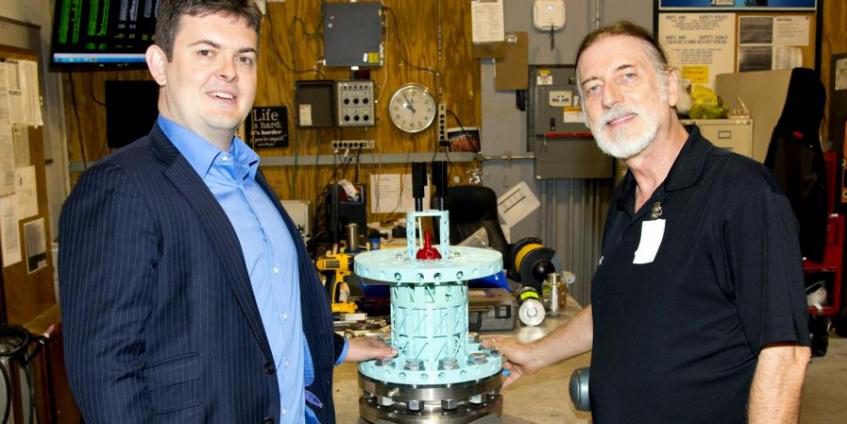“The ability of this pintle to simply and efficiently inject a multitude of hypergolic fuels and throttle them from five percent all the way to full throttle is very exciting. It will save on complexity, points of failure, and weight in current spacecraft and rockets. This points to an exciting solution for future manned missions to Mars as well as in situ resource utilization for the return trip, as the pintle could use LOX/Hydrogen on the trip out and LOX/Methane from Mars on the way back. We’re also encouraged by the possibility of adapting this pintle to more traditional fuels for air-breathing craft. A bulletproof option that affects most types of aircraft.”
~Chris Craddock, Founder, Rocketstar, LLC
Executive Summary
For the last several years, aerospace companies have been examining ways to use additive manufacturing (AM), or 3D printing, to aid the production of rocket engines. Using AM helps to reduce the number of parts in engine components and thus speeds up production and lowers costs. While initially developing the TrailBlazer Technologies/RocketStar pintle injector in a traditional form, ultimately, we seek to find novel ways to take advantage of AM to improve the capabilities of our pintle and other rocket systems but also to produce them more efficiently. AM will open up opportunities of design freedom and remove all the traditional barriers to design and manufacturing.
NASA-MSFC has pursued multiple, successful, technology tasks since 2005 to develop components that can be used for relevant liquid oxygen/liquid methane (LOX/LCH4) engine systems in the 100-25,000 lbf thrust range. The efforts at MSFC have included multiple coaxial and impinging injector designs that have offered good performance and stability. However, limited throttle range testing has been pursued on these injectors with LOX/LCH4. Since in-space applications for LOX/LCH4 will likely require high throttle range to maximize the mission range of available engine designs, a pintle injector offers a potential solution. Pintle injectors inherently offer high throttle range compared to coaxial and impinging injector designs. Evaluating such injectors for LOX/LCH4 systems may significantly improve the capability and operating range of the in-space engines that MSFC is pursuing. Developing and evaluating a LOX/methane pintle injector in this continuing effort will provide results that support multiple near-term engine applications for NASA and commercial opportunities. This injector design and development will facilitate a separate aerospike engine design that RocketStar is pursuing. RocketStar plans to fabricate the injector with AM to optimize and/or enhance design features that have not been available with traditional fabrication techniques.
This Cooperative Agreement required less than $100K in labor resources from MSFC. The goal was for RocketStar to complete the design and fabrication of a prototype pintle injector that can be integrated with an existing LOX/LCH4 test system at MSFC. With the support of NASA George C. Marshall Space Flight Center, the TrailBlazer Technologies/RocketStar team developed a basic pintle model in AutoCAD to interface with MSFC’s milk stool and combustion chamber. A plastic model was printed, assembled, and transported to MSFC, where it was successfully bolted to an interface fixture representing a sample combustion chamber interface and visually inspected against a fixture representing the milk stool interface under the supervision of MSFC personnel, Sandra Elam Greene (ER36) and Reginald Alexander (ST03). This was a successful fit test, meeting all the critical interface requirements for future RocketStar/TrailBlazer Technologies/Micro Aerospace Solutions team pintle hot tests. Follow-up efforts to this agreement will pursue hot-fire testing of a metal additive manufactured injector at MSFC in a relevant environment and using design techniques that will facilitate operation with a variety of oxidizer-fuel combinations with minimal redesign and manufacturing costs. The hot-fire testing will evaluate the performance and stability of the pintle injector compared to the coaxial and impinging designs. Testing will also demonstrate the pintle injector’s throttle range capability. The hot-fire testing efforts at MSFC will be pursued via a space act, or other relevant, agreement.


